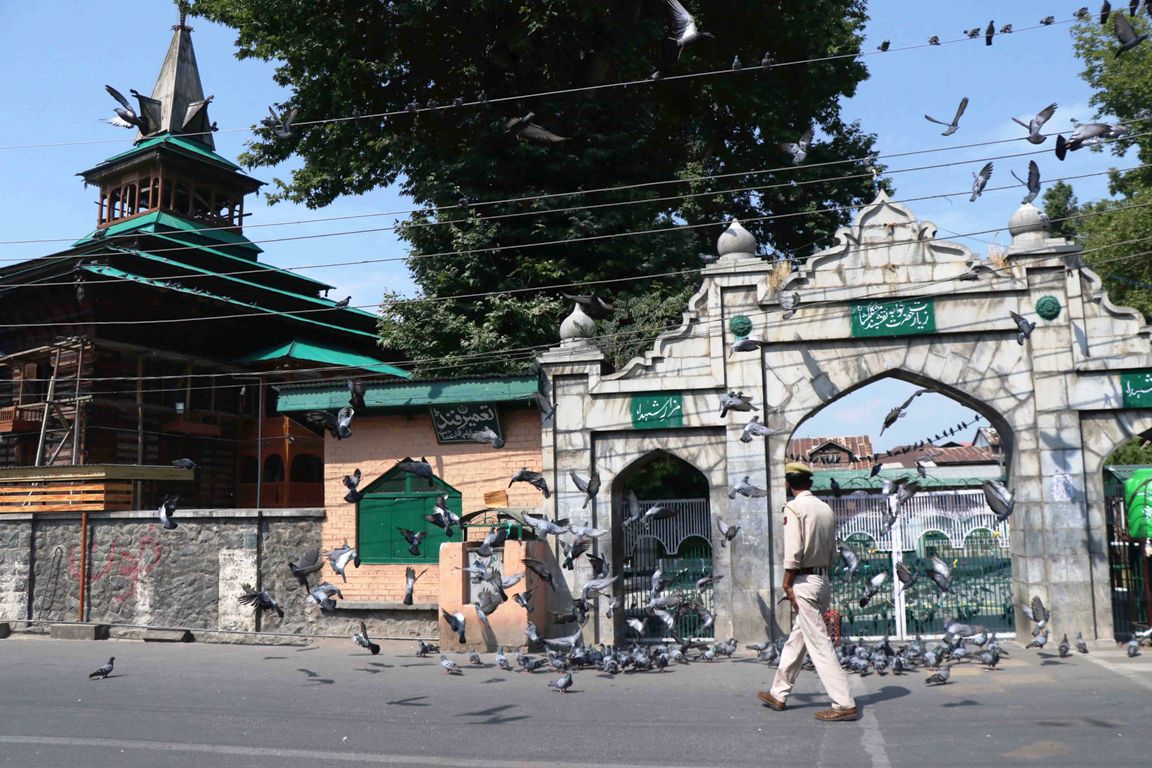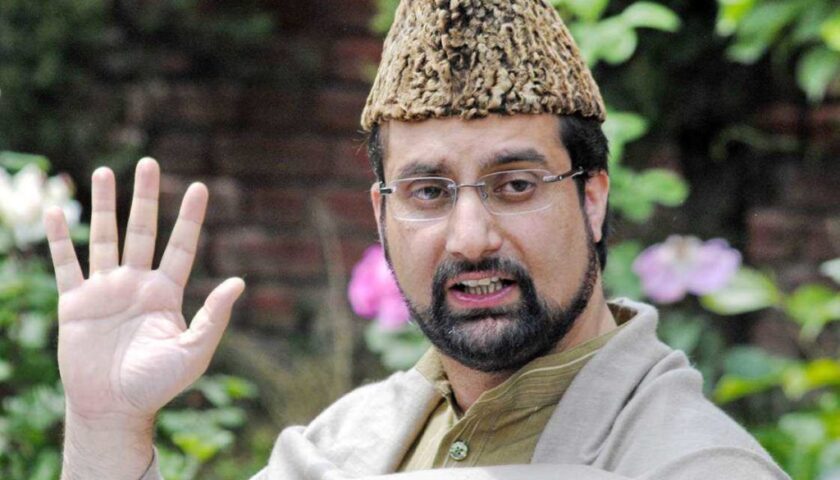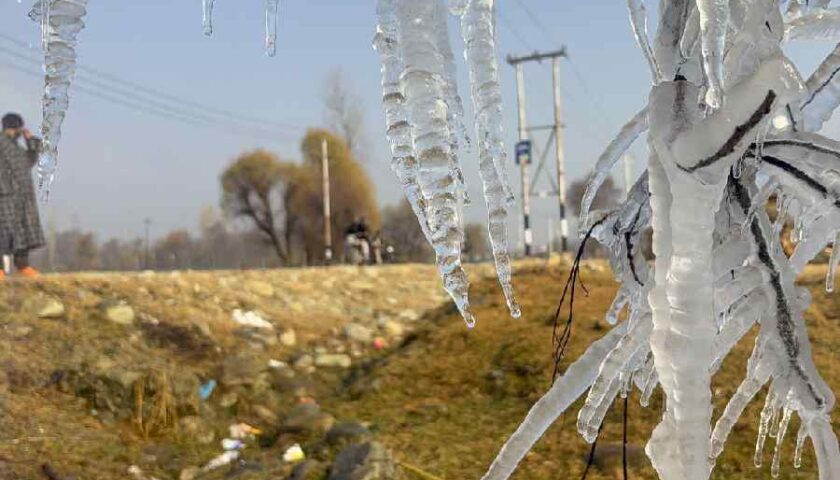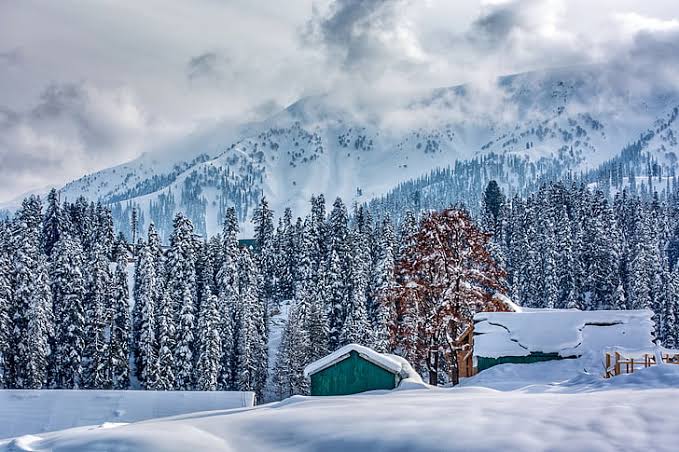Kashmir Martyrs’ Day 2025: A Silenced Tribute to the 1931 Uprising
By: Javid Amin | Srinagar | 13 July 2025
A Day of Remembrance, Now Silenced
Kashmir Martyrs’ Day, observed annually on July 13, marks a pivotal chapter in Jammu and Kashmir’s political history. It commemorates the 22 valiant civilians who laid down their lives in 1931 while resisting the autocratic Dogra monarchy. For decades, the day stood as a solemn reminder of sacrifice and resistance. Yet, in 2025, this historic observance faced another roadblock.
On July 13, 2025, the Jammu and Kashmir Police denied permission to major regional political parties—including the National Conference (NC), Peoples Democratic Party (PDP), and Apni Party—to pay tribute at the Martyrs’ Graveyard in Khawaja Bazar, Nowhatta. The site, nestled in the heart of Srinagar’s old city, remains a powerful symbol of Kashmiri identity and resistance.
This administrative clampdown, issued under the pretext of maintaining public order, has sparked widespread outrage and renewed concerns about the region’s democratic decline.
Historical Roots: The 1931 Uprising and the Birth of Martyrs’ Day
To truly understand the controversy surrounding Martyrs’ Day, one must revisit its origins.
In 1931, Jammu and Kashmir was under the Dogra monarchy, ruled by Maharaja Hari Singh. The political atmosphere was volatile—marked by discrimination, lack of civil liberties, and systemic marginalization of the Muslim majority. The spark was lit on July 13, when Abdul Qadeer, a young man from British India, gave a fiery speech calling for resistance against the monarchy.
That day, a crowd gathered outside the Srinagar Central Jail, where Qadeer was to be tried. As the time for the afternoon prayers (Zuhr) approached, a young man stood up to call the Azan (Islamic call to prayer). He was shot by Dogra forces. Another stepped in—he too was shot. This continued until 22 civilians were martyred while trying to complete the Azan.
This moment became the cornerstone of Kashmir’s political awakening. The graves at Nowhatta became sacred ground—a place where the call for justice began to echo across generations.
Martyrs’ Day was officially recognized by the state and observed annually with solemn tributes, prayers, and political gatherings.
The Changing Political Climate Post-Article 370
The abrogation of Article 370 and 35A on August 5, 2019, by the Indian Parliament marked a turning point in Kashmir’s history. These constitutional provisions had granted special autonomy to the erstwhile state of Jammu and Kashmir.
Following the abrogation, Jammu and Kashmir was stripped of its statehood and bifurcated into two Union Territories: Jammu & Kashmir and Ladakh. Along with this administrative overhaul came sweeping restrictions on political activity, expression, and local symbols of identity—including the discontinuation of July 13 as a public holiday.
This decision was perceived by many as an attempt to erase the region’s unique political history and suppress symbols that resonate with Kashmiri sentiment.
July 13, 2025: A Day of Barriers and Condemnations
This year, the district administration in Srinagar issued an advisory ahead of Martyrs’ Day, warning of legal consequences against any violation of the ban on public gatherings. The graveyard at Khawaja Bazar was heavily barricaded, and security personnel were deployed to prevent political leaders and activists from entering.
Tanvir Sadiq Speaks Out
Tanvir Sadiq, senior NC leader, condemned the government’s decision as “deeply unfortunate.” He said:
“Denying people the right to pay homage to those who laid down their lives for our dignity and freedom is an affront to history. These martyrs are not just symbols of the past; they represent the spirit of Kashmiri resistance and hope.”
Iltija Mufti Defies the Ban
Iltija Mufti, PDP leader and daughter of Mehbooba Mufti, managed to visit the site a day early. In a powerful statement, she said:
“Their voices echo in every Kashmiri’s heart that refuses to bow. You can lock gates and arrest leaders, but you cannot imprison memory.”
Mirwaiz Umar Farooq Under House Detention
Mirwaiz Umar Farooq, Kashmir’s top cleric and a key figure in the separatist-leaning Hurriyat Conference, was placed under house arrest for the second consecutive day. He had intended to lead Friday prayers at Jamia Masjid and deliver a sermon honoring the 1931 martyrs.
His continued detention drew criticism from civil society and religious circles.
Collective Memory Under Siege
Observers argue that the denial of access to Martyrs’ Graveyard is not merely a matter of law and order—it is a calculated move to suppress collective memory and political consciousness.
Public historian Zareef Ahmad Zareef said:
“The government wants to dictate what part of our history is worth remembering. But memory doesn’t need official permission—it lives in people’s hearts, in their stories, and in their silence.”
The symbolism of July 13 remains potent. Even in silence, families light candles, recite prayers, and whisper names passed down through generations. Despite the state’s efforts, the memory persists—in poetry, folklore, and everyday resistance.
The Political Costs of Historical Erasure
The refusal to allow peaceful commemoration raises deeper questions about the health of democracy in Kashmir. By erasing historical observances, the administration not only curbs dissent but also risks alienating future generations from their heritage.
Political analyst Siddiq Wahid observed:
“When states try to erase memory, they invite rebellion—not necessarily on the streets, but in minds and homes. You can remove a holiday from the calendar, but you can’t delete history from memory.”
Martyrs’ Day in the Pre-2019 Era: A Symbol of Unity and Defiance
Before 2019, Martyrs’ Day brought together people from all political affiliations. Leaders from NC, PDP, Congress, and even separatist groups would offer floral tributes at the graveyard, read out the names of the martyrs, and renew vows to uphold justice.
Educational institutions held seminars, cultural troupes performed plays based on the 1931 events, and mosques echoed with prayers. It was both a day of mourning and a moment of reaffirming political solidarity.
Azan Completed: The Sacred Act that Sparked a Movement
The 1931 uprising is remembered most poignantly through the story of the interrupted Azan. Twenty-one young men fell one after the other, each stepping forward to complete the call to prayer. Finally, the 22nd martyr’s voice completed it.
This act has been immortalized in Kashmiri oral history and literature. It wasn’t just a religious ritual—it became a symbol of defiance, sacrifice, and collective courage. Each martyr represented a verse in the unyielding chorus of Kashmiri self-respect.
The Future of Martyrs’ Day: Memory vs Authority
Despite administrative bans and political pressure, the spirit of Martyrs’ Day is far from extinguished. The question now is: who controls the narrative?
If history is written by the victors, memory is preserved by the people. And in Kashmir, memory has long outlived empires.
Whether through whispered stories, clandestine vigils, or digital memorials, Kashmiris continue to honor their past. As long as these memories breathe, Martyrs’ Day will remain an indelible part of the Kashmiri conscience.
Bottom-Line: Echoes That Refuse to Fade
Kashmir Martyrs’ Day 2025 will be remembered not for official ceremonies but for the barriers placed around memory. It will be recalled as a day when people were stopped from mourning, leaders were silenced, and a sacred graveyard was sealed.
But it will also be remembered for the courage of those who refused to forget, for those who still hear the echo of the Azan, and for a people whose memory refuses to fade—even when the state tries to turn the page.
In the end, history is not what the state mandates. It is what the people remember.




